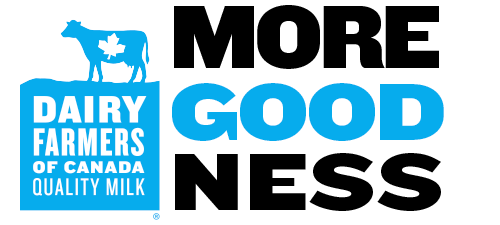Highlights
- Studies have shown that dairy fat may not be harmful to health and that it could be beneficial.
- Canadians have been buying more dairy products; in particular higher fat products like cream, butter and cheese.
- To accommodate this demand, Canada has imported more butter than usual, on a temporary basis, to ensure Canadians got the butter they needed.
- To be sure your dairy products are 100% Canadian, simply look for the Dairy Farmers of Canada Quality Milk logo on packaging.
When the market first started to change in favour of dairy fat, the Canadian dairy industry initially responded with deliberate prudence, as economic indicators (increase in consumption) suggested that the rate at which the markets were growing seemed almost too good to be true. Therefore, it took some time to produce the extra milk needed to match the increase in demand. At times during this transition, Canada imported more butter than usual, on a temporary basis, to ensure all Canadian markets had the butter they needed: in stores, in restaurants, and in bakeries.
During the same period, the world dairy market was faced with a significant surplus of milk. This resulted in the farm-level price of milk around the world to plunge and forced many farmers in Europe, United States and Oceania out of business. Farmers world-wide are typically a resilient bunch, and many struggled to stay afloat, holding out for better days, or producing more milk to weather the downturn. Of course, the answer to the problem of an overall surplus production is not to produce more milk. This meant that prices stayed low for even longer, and industries around the world, often with the help of their respective governments, struggled to find new export markets to sell their surplus. This has led many countries to look to Canada as a potential lucrative market to sell their dairy products.
It should be noted that existing market access commitments made under previous trade agreements already stipulate that Canada agrees to import certain quantities of dairy products from various countries (butter from Oceania, cheeses from Europe and other countries, etc). Among these countries, who already enjoy negotiated access to the Canadian market, are the same that benefitted from the temporary increase in butter imports mentioned above.
It seems that some trading partners think that the temporary increase in butter imports should be permanent, and, that somehow, they are now entitled to keep that share of the Canadian market - in addition to the negotiated access they already enjoy. We disagree: while we will always respect and adhere to Canada’s international trade commitments, the Canadian dairy market is comparatively small and is already full of Canadian milk; it is not up to Canada to become a dumping ground for the world’s surplus dairy production every time other countries overproduce. The reality is Canadians want Canadian milk and dairy products, and, thanks to supply management, the Canadian dairy industry is consistently ready, willing, and able to provide these high quality, nutritious, dairy products to meet that demand.
If you want to be certain your dairy products are 100% Canadian, the easiest way is to look for our certification of origin logo.




